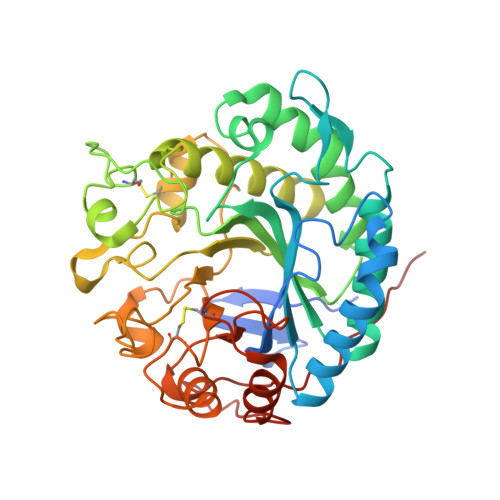Structure-based investigation into the functional roles of the extended loop and substrate-recognition sites in an endo-beta-1,4-d-mannanase from the Antarctic springtail, Cryptopygus antarcticus.
Kim, M.K., An, Y.J., Song, J.M., Jeong, C.S., Kang, M.H., Kwon, K.K., Lee, Y.H., Cha, S.S.(2014) Proteins 82: 3217-3223
- PubMed: 25082572
- DOI: https://doi.org/10.1002/prot.24655
- Primary Citation of Related Structures:
4OOU, 4OOZ - PubMed Abstract:
Endo-β-1,4-D-mannanase from the Antarctic springtail, Cryptopygus antarcticus (CaMan), is a cold-adapted β-mannanase that has the lowest optimum temperature (30°C) of all known β-mannanases. Here, we report the apo- and mannopentaose (M5) complex structures of CaMan. Structural comparison of CaMan with other β-mannanases from the multicellular animals reveals that CaMan has an extended loop that alters topography of the active site. Structural and mutational analyses suggest that this extended loop is linked to the cold-adapted enzymatic activity. From the CaMan-M5 complex structure, we defined the mannose-recognition subsites and observed unreported M5 binding site on the surface of CaMan.
- Marine Biotechnology Research Division, Korea Institute of Ocean Science and Technology, Ansan, 426-744, Republic of Korea.
Organizational Affiliation:



















